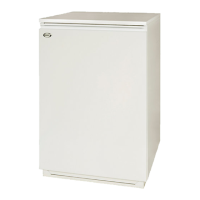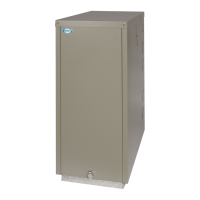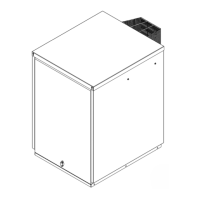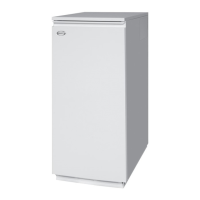10
Oil Storage &
Supply System
3.1 Fuel Supply
Fuel Storage
The tank should be positioned in
accordance with the recommendations
given in BS 5410:1:1997, which gives
details of filling, maintenance and
protection from fire.
A steel tank may be used and must be
constructed to BS 799:5:1987 and OFS
T200.
A galvanised tank must NOT be used.
A plastic tank may be used and must
comply with OFS T100.
Plastic tanks should be adequately
and uniformly supported on a
smooth level surface, across their
entire load bearing base area, that is,
the area in contact with the ground.
Fuel Pipes
For gravity fuel supply systems, fuel
supply pipes should be of copper tubing
with an external diameter of at least
10 mm.
Flexible pipes must NOT be used
outside the boiler case.
A remote sensing fire valve must be
installed in the fuel supply line (outside)
where it enters the building, with the
sensing head located above the burner.
Recommendations are given in
BS 5410:1:1997.
A metal bowl type filter with a
replaceable micronic filter must be fitted
in the fuel supply line adjacent to the
boiler. A shut-off valve should be fitted
before the filter, to allow the filter to be
serviced.
A flexible fuel line, adaptor and
1
/4" BSP
isolation valve are supplied loose with
the boiler for the final connection to the
burner. If a two pipe system or Tiger
Loop system is used, an additional
flexible fuel line (900mm) and
3
/8" to
1
/4"
BSP male adaptor are available from
Grant Engineering (UK) Limited (Part No.
RBS36).
Metal braided flexible pipes should be
replaced annually when the boiler is
serviced. Long life flexible pipes should
be inspected annually and replaced at
least every 60 months.
!
CAUTION
!
CAUTION
Galvanised pipe must not be used.
All pipe connections should preferably
use flared fittings. Soldered connections
must not be used on oil pipes.
!
CAUTION
!
NOTE
Grant UK recommend that a fire valve
with a temperature rating of 95°C be
installed on any Grant Vortex Pro
Combi.
!
NOTE
3 Oil Storage & Supply System
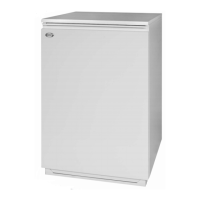
